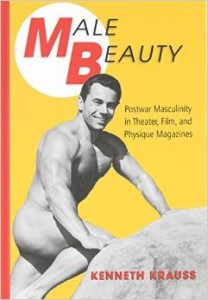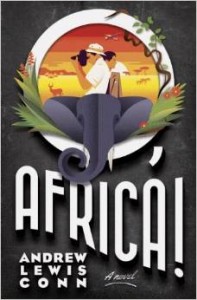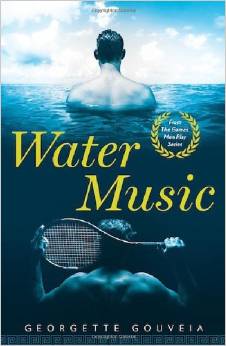 Male Beauty: Postwar Masculinity in
Male Beauty: Postwar Masculinity in
Theater, Film, and Physique Magazines
by Kenneth Krauss
SUNY Press. 366 pages, $27.95
This book illuminates the changing image of masculinity between the end of World War II and the early 1960s. According to Krauss, an associate professor of drama at the College of Saint Rose, this change set the stage for a “prolonged period of social revolt” in the late ’60s and ’70s. Crucial to this transformation was an idea of male beauty. Before the 1950s, masculinity was anchored to such qualities as strength, loyalty, and wisdom, while “beauty was always regarded, especially from the male point of view, as dubious,” writes Krauss. His book offers a richly contextualized reading of plays of the era, including Tennessee Williams’ The Glass Menagerie, Robert Anderson’s Tea and Sympathy, and Edward Albee’s The Zoo Story. Krauss explores the film careers of Montgomery Clift, James Dean, and Marlon Brando, whose sex appeal exemplified an image of masculinity that held an emotional complexity and contradictory impulses, in contrast to such actors as John Wayne and Humphrey Bogart. He also details the careers of three physique models—John Tristram, Glenn Bishop, and Richard Harrison—whose images were iconic of the era’s beefcake and muscle magazine subculture, exemplified by Bob Mizer’s Athletic Model Guild, founded in Los Angeles in the late 1940s. While Krauss’ larger arguments are not so fully developed across each part of the book, Male Beauty offers great biographical and historical details, intriguing rereadings of iconic plays and films, and compelling insights into the idea of male beauty in an era of changing codes of gender and sexuality.
James Polchin
 Water Music
Water Music
by Georgette Gouveia
River Grove Books. 216 pages, $12.95
This novel is centered around two sets of Olympic athletes each of which is secretly in love with his rival. Alex and Ali are tennis champions: Alex from a background of privilege, Ali from war-torn Iraq. Top swimmers Daniel and Dylan are similar: Dylan comes from a family of the one percenters, while Daniel is from lesser origins. The inner lives of the characters are explored as they meet and compete, then later when they vacation together in Mykonos. The novel examines the dynamics of power and competition in love from alternating points of view. And while this technique allows us to compare their differing perceptions of events, it sometimes gets in the way of our truly knowing the characters themselves.
Dale W. Boyer
 O, Africa!
O, Africa!
by Andrew Lewis Conn
Hogarth Press. 384 pages, $25.
Part picaresque misadventure, part diaspora story, O, Africa! takes us into the early world of silent movies and the men and women who pioneered them. Taking place in the summer of 1928, it tells the story of twin brothers Izzy and Micah Grand, up-and-coming comic filmmakers from the Silent Era. (Micah directs while Izzy works the camera.) Both men are living somewhat on the edge—Micah’s a philanderer who has a fling with a black woman, while Izzy is a semi-closeted homosexual—but what gets them into trouble is Micah’s gambling debt and the need to escape the Harlem gangsters that he owes. So they jump at a studio producer’s offer to send them to Africa to shoot stock footage for jungle movies. It is there, among the Malwikians, that Micah and Izzy have exotic adventures of a kind that fictional white people have been having in Africa for centuries: there is tribal magic and sexual healing, including explorations by Izzy that allow him to come to terms with his sexual orientation. Author Andrew Lewis Conn spins a fascinating tale. Here the price of admission includes not only a trip to Africa but a behind-the-scenes look at Hollywood in its dazzling, madcap early years when anything seemed possible.
Leo Racicot





